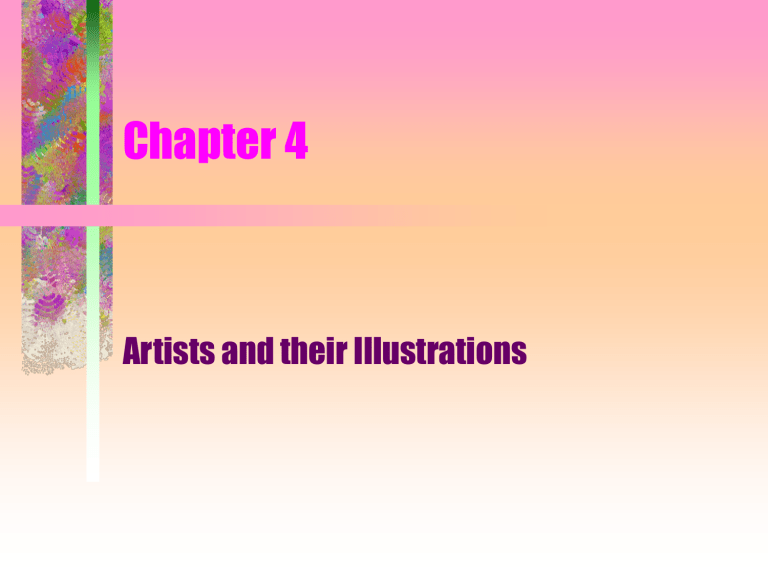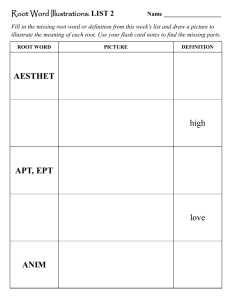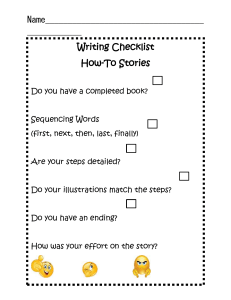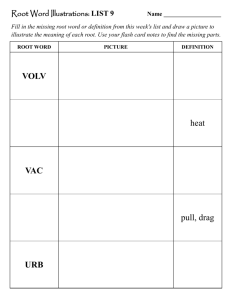
Chapter 4 Artists and their Illustrations Line • Familiar • Weight • Direction Examine your books for Chapter 4 and identify the book with the most effective use of lines. Color • Conveys mood and emotion • Passing of time • Black and white Examine your books for Chapter 4 and identify the book with the most effective use of color. Shape • • • • Organic vs. geometric Shapes of people Alphabet books Overall form and edges Examine your books for Chapter 4 and identify the book with the most effective use of shape. Texture • How is texture created in illustration? • How do children react to texture? Examine your books for Chapter 4 and identify the book with the most effective use of texture. Design • • • • How do illustrators create emphasis with design? Symmetry Repetition Borders Examine your books for Chapter 4 and identify the use of borders. Levels of Formality of Design Identify FORMAL 1. 2. INFORMAL Text placed opposite 3. Text within, around, illustrations on beside illustrations. adjoining pages. 4. Text with two or more Text positioned arrangements. above or below 5. No text illustrations. Artistic Media - Identify • • • • • • • Pen and ink Watercolors Acrylics Pastels Oils Woodcuts Collage Artistic Style - Identify • • • • Representational (realistic) art Impressionism Expressionism Abstract art Evaluating Illustrations • Illustrations tell a story of their own • Complement and reinforce • Help readers anticipate the unfolding of the story • Develop characters • Accurate and consistent Outstanding Illustrators • • • • • • • • • • Barbara Cooney Tomie dePaola Leo and Diane Dillon Susan Jeffers Ezra Jack Keats Robert McCloskey Alice and Martin Provensen Maurice Sendak Chris Van Allsburg David Wiesner Teaching Activities • What are some of the activities suggested using children’s illustrated books for teaching? • Which of the activities would you feel most comfortable or most enjoy teaching? • Are you familiar with other teaching activities using illustrations?



